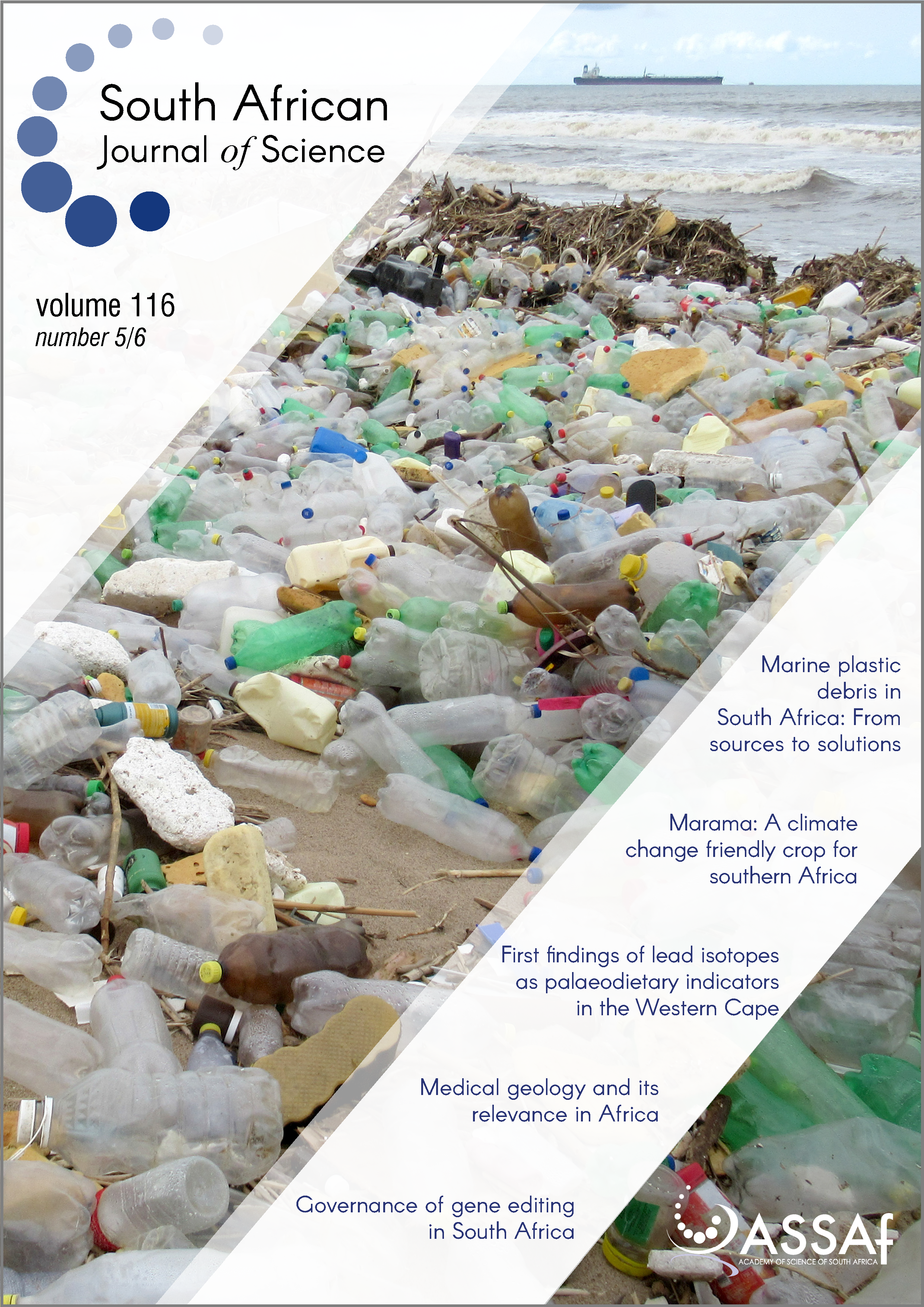Monitoring marine plastics – will we know if we are making a difference?
DOI:
https://doi.org/10.17159/sajs.2020/7678Keywords:
adaptive management, marine debris surveys, bioindicators, turnover, upstream monitoringAbstract
In the context of marine anthropogenic debris management, monitoring is essential to assess whether mitigation measures to reduce the amounts of waste plastic entering the environment are being effective. In South Africa, baselines against which changes can be assessed include data from the 1970s to the 1990s on microplastics floating at sea, on macro- and microplastic beach debris, and interactions with biota. However, detecting changes in the abundance of microplastics at sea is complicated by high spatial and temporal heterogeneity in net samples. Beach debris data are easier to gather, but their interpretation is complicated by the dynamic nature of debris fluxes on beaches and the increase in beach cleaning effort over time. Sampling plastic ingested by biota is a powerful approach, because animals that retain ingested plastic for protracted periods integrate plastics over space and time, but there are ethical issues to using biota as bioindicators, particularly for species that require destructive sampling (e.g. turtles, seabirds). Bioindicators could be established among fish and invertebrates, but there are technical challenges with sampling microplastics smaller than 1 mm. Fine-scale debris accumulation on beaches provides an index of macroplastic abundance in coastal waters, and offers a practical way to track changes in the amounts and composition of debris in coastal waters. However, upstream flux measures (i.e. in catchments, rivers and storm-water run-off) provide a more direct assessment of mitigation measures for land-based sources. Similarly, monitoring refuse returned to port by vessels is the best way to ensure compliance with legislation prohibiting the dumping of plastics at sea.
Significance:
- Monitoring is required to assess whether mitigation measures to reduce waste plastics at sea are making a difference.
- Monitoring the leakage of plastic from land-based sources is best addressed on land (e.g. in storm drains and river run-off) before the plastic reaches the sea.
- Illegal dumping from ships is best addressed by monitoring the use of port waste reception facilities.
- Sampling plastic ingested by biota is a powerful approach, using fish and invertebrates as bioindicators for larger microplastic fragments.
Downloads
Published
Issue
Section
License

All articles are published under a Creative Commons Attribution 4.0 International Licence
Copyright is retained by the authors. Readers are welcome to reproduce, share and adapt the content without permission provided the source is attributed.
Disclaimer: The publisher and editors accept no responsibility for statements made by the authors
How to Cite
- Abstract 2966
- PDF 1589
- EPUB 249
- XML 406
- Supplementary Material 281













.png)